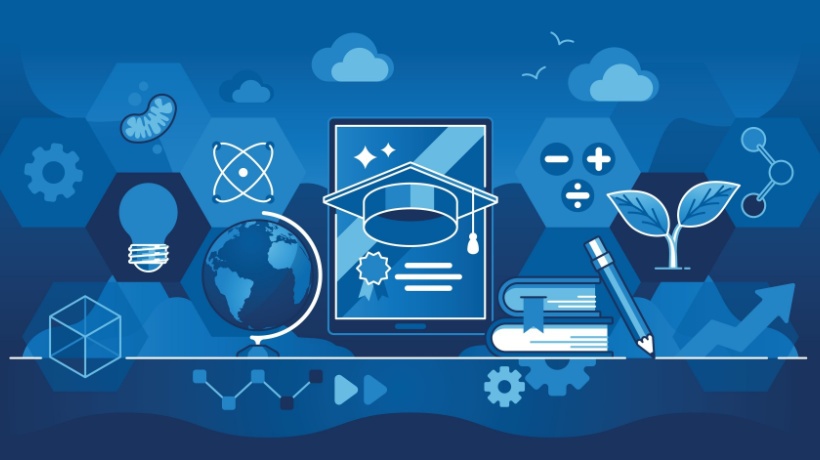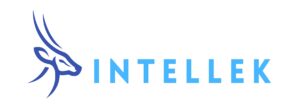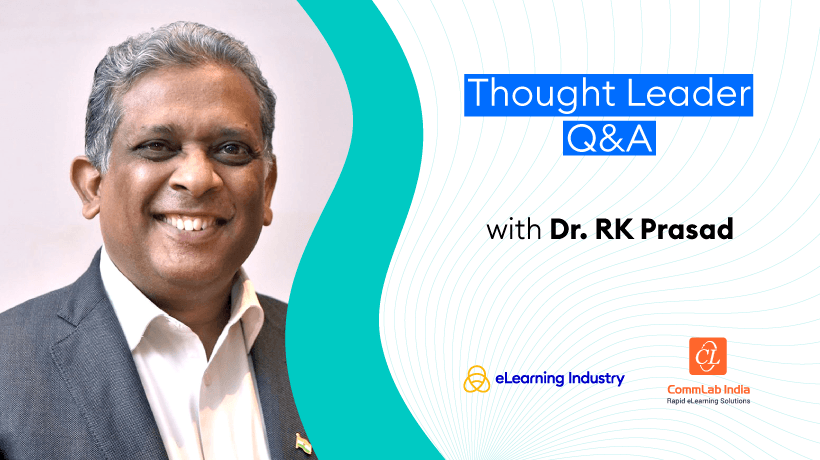From LMS To LXP: Revolution Or Fad?
Traditional Learning Management Systems (LMSs) have long been the go-to solution for managing and delivering learning content. However, as the learning landscape continues to transform, a new player has emerged which may revolutionize the way we approach education and training: Learning Experience Platforms (LXPs).
So...when does an LMS become an LXP? By understanding the core differences and key features of these platforms, we uncover the factors that may lead to a transition. We also examine the challenges and considerations organizations face when adopting an LXP, and provide best practices for a potential transition.
Understanding Learning Management Systems
Learning Management Systems have long been the cornerstone of digital education and training. These systems are designed to facilitate the management, delivery, and tracking of learning content in a structured and organized manner. Understanding the key characteristics and functionalities of LMS is crucial to appreciating the transition to LXPs.
Definition And Purpose Of An LMS
At its core, an LMS is a software application that provides a centralized platform for organizing and delivering educational content. It serves as a hub for administrators, instructors, and learners to interact, access resources, and track progress. The primary purpose of an LMS is to streamline the learning process, ensuring that learners have access to the right materials at the right time.
Evolution And Concept Of Learning Experience Platforms
As the need for more learner-centric and engaging educational experiences emerged, a new concept in the realm of digital learning platforms took center stage: Learning Experience Platforms. LXPs represent a paradigm shift from traditional Learning Management Systems by focusing on delivering personalized, immersive, and dynamic learning experiences. In this section, we explore the evolution and core concepts.
Definition And Characteristics Of LXPs
Learning Experience Platforms can be defined as digital platforms that prioritize the learner's experience and engagement, providing a personalized and interactive environment for learning. Key characteristics include:
- Learner-centric approach
Place the learner at the center, emphasizing individual needs, preferences, and goals. - Personalization and adaptivity
Offer personalized learning pathways, content recommendations, and adaptive features that dynamically adjust to each learner's progress and performance. - Content curation and user-generated content
Enable the curation of diverse learning resources from various sources, including user-generated content, to provide a comprehensive and up-to-date learning library. - Social and collaborative learning
Facilitate social interaction, peer collaboration, and knowledge sharing through features such as discussion forums, community spaces, and collaborative projects. - Data-driven insights
Leverage data analytics and learning analytics to provide actionable insights into learner progress, engagement, and performance.
Core Features And Functionalities Of LXPs
LXPs offer a range of features and functionalities that enhance the learning experience:
- Content recommendation engine
LXPs leverage algorithms and data analysis to recommend relevant and engaging learning resources. - Social and collaborative features
LXPs provide spaces for discussion, networking, and collaborative projects, promoting social learning and peer interaction. - Gamification and microlearning
LXPs incorporate gamified elements and microlearning techniques to increase learner motivation and knowledge retention. - Learning analytics
LXPs utilize advanced analytics to track learner progress, engagement, and performance, enabling insights-driven improvements.
Key Differences Between LMSs And LXPs
While both LMS and LXP serve the purpose of managing and delivering learning content, several fundamental differences set LXPs apart:
- Content focus
LMSs primarily focus on content delivery and management, while LXPs prioritize the learning experience and engagement. - User-generated content
LXPs embrace user-generated content, allowing learners to contribute and share their knowledge, while LMSs predominantly rely on predefined content. - Social and collaborative learning
LXPs foster social learning by facilitating collaboration and knowledge sharing among learners, whereas LMSs tend to have limited social interaction features.
Challenges And Considerations In Adopting An LXP
Transitioning from a traditional Learning Management System to a Learning Experience Platform brings forth a new set of challenges and considerations for organizations. While the benefits of adopting an LXP are significant, it is crucial to navigate these challenges effectively. In this section, we explore the key challenges and important considerations when adopting an LXP.
Cost Implications And Budgetary Considerations
- Investment
Adopting an LXP typically involves financial investments in software licenses, customization, integration, and ongoing maintenance. - Total cost of ownership
Organizations must consider the long-term costs associated with training, support, content creation, and potential scalability requirements. - Return On Investment (ROI)
It is essential to assess the potential benefits and align them with the costs to determine the ROI of an LXP.
Technical Requirements And Compatibility
Organizations need to evaluate how the LXP will integrate with existing systems such as HR management systems, content authoring tools, or customer relationship management software. Assessing the compatibility of the LXP with the organization's IT infrastructure, including network capacity, bandwidth, and storage, is crucial.
Training And Support Needs
A successful transition to an LXP involves addressing the training and support needs of administrators, instructors, and learners. Adequate training should be provided to ensure all users are proficient in utilizing the features and functionalities of the LXP effectively. Setting up support channels and a dedicated help desk is essential for promptly addressing user inquiries, technical issues, and troubleshooting.
Data Security And Privacy Concerns
When adopting an LXP, organizations must prioritize data security and privacy. Robust measures should be implemented to protect sensitive learner data, ensuring compliance with privacy regulations. This includes encryption protocols, secure data storage, access controls, and user authentication. During the data migration process, it is crucial to ensure the secure and efficient transfer of data, minimizing the risk of data loss or unauthorized access.
Stakeholder Engagement And Buy-In
Effective stakeholder engagement and obtaining buy-in are critical components of a successful LXP adoption. Organizations should proactively manage the change process by involving stakeholders, addressing their concerns, and communicating the benefits of transitioning to an LXP.
Content Strategy And Migration
Developing a comprehensive content strategy is crucial when adopting an LXP. Organizations should evaluate their existing content library to identify valuable resources that can be migrated to the LXP. This involves assessing the relevancy and suitability of the content and determining how it aligns with the goals and objectives of the LXP.
Scalability And Future Growth
Considering scalability and future growth is essential to ensure the long-term viability of the LXP. Organizations should assess the LXP's ability to accommodate growing learner populations, increased content volume, and potential expansion. Scalability factors to consider include the LXP's architecture, performance capabilities, and support for additional users and content.
Transitioning From LMS To LXP: Navigate The Complexities And Challenges
Transitioning from a traditional Learning Management System to a Learning Experience Platform is a complex endeavor that requires careful planning, consideration, and implementation. While the benefits of adopting an LXP are compelling, organizations must navigate through various challenges to ensure a successful transition. In this section, we explore best practices to help organizations navigate the complexities of transitioning from LMS to LXP.
1. Conduct A Needs Assessment
Before embarking on the transition journey, conduct a thorough needs assessment to identify the specific requirements, goals, and objectives of the organization. Understand the pain points and limitations of the existing LMS and define the desired outcomes for the new LXP. This assessment will serve as a foundation for making informed decisions throughout the transition process.
2. Define Clear Objectives And Success Metrics
Establish clear objectives and success metrics for the transition. Determine what success looks like for the organization, whether it's improved learner engagement, personalized learning experiences, or increased knowledge retention. Clearly defined objectives and metrics will guide the transition process and help evaluate the effectiveness of the LXP implementation.
3. Engage Stakeholders And Foster Buy-In
Involve key stakeholders from various levels of the organization throughout the transition process. Engage executives, administrators, instructors, and learners to ensure their buy-in and active participation. Foster open communication, address concerns, and emphasize the benefits of the LXP to gain support and create a sense of ownership among stakeholders.
4. Develop A Comprehensive Transition Plan
Develop a detailed and comprehensive transition plan that outlines the steps, timelines, and resources required for a smooth migration from LMS to LXP. Consider the technical aspects, content migration, training requirements, and change management strategies. Ensure that the plan accounts for potential challenges and contingencies, allowing for flexibility and adaptation as needed.
5. Invest In Robust Training And Support
Recognize the importance of providing comprehensive training and ongoing support to all stakeholders involved. Offer thorough training sessions for administrators, instructors, and learners to ensure a smooth transition and adoption of the LXP. Establish a dedicated support system, such as a help desk or online support portal, to address user inquiries, technical issues, and any other concerns promptly.
6. Implement A Phased Approach
Transitioning from LMS to LXP is a significant change that can be overwhelming if done all at once. Consider implementing a phased approach, focusing on specific departments, user groups, or courses, initially. This approach allows for better management of resources, training, and support, while also providing opportunities to learn from early adopters and refine the transition process.
Future Possibilities For LXPs: A Buzzword Phenomenon?
While LXPs have made a significant impact by emphasizing learner-centric experiences, it is essential to recognize that the LXP trend may evolve or potentially merge with existing LMS approaches. The future lies in the continuous improvement and innovation of LMSs, incorporating the best aspects of LXPs and adapting to changing learning requirements.
Integration Of LXP Features Into LMSs
While LXPs offer unique features and a learner-centric approach, the evolution of LMSs should not be overlooked. As organizations recognize the importance of learner engagement and personalized experiences, more advanced LMSs may incorporate LXP-like functionalities into their platforms. This integration could bridge the gap between the two approaches, offering a comprehensive solution that combines the benefits of both.
Enhanced Personalization And Adaptive Learning
Future advancements in LMSs already focus on enhancing personalization and adaptive learning capabilities. By leveraging data analytics, AI, and Machine Learning algorithms, LMSs can provide tailored learning pathways, content recommendations, and adaptive assessments. This evolution would enable LMSs to offer more individualized and dynamic learning experiences, similar to those provided by LXPs.
Continuous Improvement And Innovation In LMSs
The competition and market demand created by the LXP trend can drive LMS providers to innovate and improve their offerings. LMSs may adopt a more user-friendly interface, intuitive navigation, and interactive features to enhance learner engagement. This evolution would empower organizations to provide immersive and engaging learning experiences without the need for a separate LXP.
Integration With External Learning Tools And Resources
LMSs are increasingly integrating with external learning tools and resources to expand their capabilities and meet diverse learning needs. By seamlessly incorporating third-party content libraries, social learning platforms, Virtual Reality simulations, or microlearning apps, LMSs can provide a broader range of resources and learning opportunities within a unified platform.
Hybrid Approaches And Customization Options
Organizations may adopt hybrid approaches that combine elements of both LMSs and LXPs. This flexibility allows organizations to tailor their learning ecosystem based on their specific needs, leveraging the strengths of each approach. Customization options within LMSs can enable organizations to create a learner-centric environment while maintaining the centralized management and control provided by traditional LMSs.
Scalability And Adaptability To Future Learning Needs
LMSs will likely continue to prioritize scalability and adaptability to accommodate evolving learning needs. This includes scalability in terms of user volume, content volume, and performance, as well as the ability to adapt to emerging technologies, such as mobile learning, Augmented Reality, or AI-powered learning assistants.
Final Thoughts On The Transition From LMS To LXP
It is essential to recognize that the LXP trend may diminish over time as LMS providers will likely enhance their offerings to incorporate LXP-like features. Organizations should monitor future trends and possibilities, such as the integration of LXP features into LMSs, enhanced personalization and adaptive learning, continuous improvement and innovation in LMSs, integration with external learning tools, hybrid approaches, and scalability and adaptability to future learning needs.
Remember, the learning landscape is constantly evolving, and it is vital to stay proactive and responsive to emerging trends to ensure that your organization's learning initiatives remain effective and impactful in the years to come. Embrace the journey, adapt to change, and empower your learners to thrive in a rapidly evolving digital world.
Editor's Note: Check out our directory to find, choose, and compare eLearning Industry's Top LMS Software.








